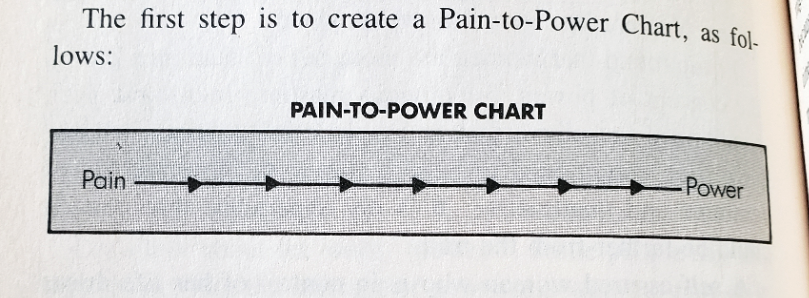Going hand-in-hand with talking about our comfort zone, is Susan’s Pain-to-Power chart. We can’t go from a place of pain to a feeling of power without going from stagnation to growth, from comfort zone to possibility.
Susan explains that feeling fear is not really the point when it comes to feeling the fear and doing it anyway. Everyone feels fear. What makes the difference is how we hold the fear. Some people experience fear and just walk right past it, while others—most of us really—experience fear as an insurmountable boundary. Maybe it should be “holding the fear and do it anyway.”

Susan’s Pain-to-Power chart shows us that, “the secret in handling fear is to move yourself from a position of pain to a position of power. The fact that you have the fear then becomes irrelevant.”
The power that Susan refers to here is not the power of control over other people and things, it is the power that each of us holds within the self. Susan said, “This means power over your perceptions of the world, power over how you react to situations in your life, power to do what is necessary for your own self-growth, power to create joy and satisfaction in your life, power to act, and power to love.”
This kind of power leaves neediness and distrust behind. For when we feel internally powerful, we don’t need the kind “power” that draws from other people. We can love and trust with ease because we love and trust ourselves.
When we look at the Pain-to-Power chart, most of us will see ourselves somewhere in the middle. We aren’t totally being held back by our fears, but we are also not fully in touch with our own power. Using the chart as a guide, our job is to expand our comfort zone, little by little, to move ourselves closer to the Power end of the chart. There are probably very few people who live constantly at the Power end of the chart. Most of us will have more powerful days and some painful days. But the chart can help us see where we are right now and help us to see how to move forward in a more powerful way.
